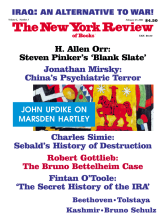Jem Belcher was one of the most elegant and widely admired bare-knuckle prizefighters of the early Regency. He was renowned for his handsome looks, his extraordinary pluck, his eccentric boxing style, and his unshakable good manners both inside and outside the ring. He was also famous for his unnerving habit of telling jokes to his opponents at the bloodiest mo-ments of combat. “Belcher’s style was original,” wrote Pierce Egan in Boxiana (1812). “…His antagonists were terrified by his gaiety and decision…and fightingmen in general were confounded with his sangfroid and intrepidity.”
Belcher came from a Bristol family of boxers. His brother Tom and apparently even his sister boxed. He found early fame in London before he was twenty, in a grueling series of thirty-round contests with the bruiser Bourke, each of which he won. However, tragedy struck in July 1803 when he lost an eye playing rackets at the Fives Court, St. Martin’s Street. He married and took over a pub, first the Jolly Brewer in Wardour Street, Soho, and later the Coach and Horses, Frith Street.
But Belcher could not bear to abandon the ring. Though he could no longer “judge the distances,” for six years he gallantly went on boxing and losing, finally being beaten by the young Tom Cribb in 1809. According to Egan, the crowds wept for their fallen hero. Belcher died, exhausted and heartbroken, two years later, aged only thirty, a Romantic poet among pugilists. This portrait by an unknown admirer was presented to his widow.
Jem Belcher’s cool style made him a favorite among Regency dandies, writers, and painters. In 1808 he took part in an exhibition match organized by Lord Elgin, and attended by several members of the Royal Academy, including Sir Thomas Lawrence, Flaxman, and Benjamin West. He was admired by Byron, and worshiped by William Hazlitt, who fondly recalls him in his famous essay The Fight (1821). Belcher always wore immaculate dark clothes, set off by a vivid and extravagant neckcloth (usually blue with white spots). This became known as a “belcher,” and is still remembered wistfully among the tailors of Savile Row.
—This essay and the portrait of James Belcher appear in Romantics and Revolutionaries: Regency Portraits from the National Portrait Gallery, London, with an introduction by Richard Holmes and entries by David Crane, Stephen Hebron, and Robert Woof (National Portrait Gallery Publications, 2002), the catalog of an exhibition at the Yale Center for British Art, New Haven, Connecticut, January 23– March 30, 2003.
This Issue
February 27, 2003



